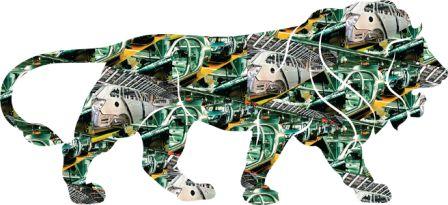
WASHINGTON (PTI): A NASA scientist is working on a next-generation laser instrument that will provide remotely collected, high-resolution, highly accurate, around-the-clock global methane measurements.
Haris Riris, a scientist at NASA's Goddard Space Flight Centre in Greenbelt, Maryland, is working on the Methane Sounder that operates much like its close cousin, the CO2 Sounder Lidar developed by Riris' close collaborator, Goddard scientist Jim Abshire.
"The next-generation instrument will be able to provide remotely collected, high-resolution, highly accurate, around-the-clock global methane measurements should it ultimately fly as a space-borne instrument," NASA said.
Haris and his team, including Goddard's Kenji Numata and Stewart Wu, will further improve the prototype instrument and then test it during a NASA DC-8 aircraft campaign later this year.
The goal is to advance the concept to a point where it perhaps could be flown on a proposed mission, such as NASA's Active Sensing of CO2 Emissions over Nights, Days and Seasons (ASCENDS).
"We're working to come up with a design that we think will work in space," Riris said.
Since initially flying the concept on a DC-8 research aircraft in 2011, he said his team has developed a better instrument.
"Our goal is to prove that the technique works and meets precision and accuracy requirements," said Riris.
On Earth, methane is an important greenhouse gas produced by certain types of bacteria in soils and in the digestive tracts of some animals.
Large quantities of methane also are produced as a result of forest fires and human industrial processes.
Although carbon dioxide, another greenhouse gas, lingers in the atmosphere longer, methane is in some respects more worrisome. It is more potent and effective at absorbing heat.
Although some satellite instruments can detect and map Earth's methane, Riris' concept gives scientists 24-hour coverage at all latitudes.
In sharp contrast to many methane instruments, the Methane Sounder also employs its own light source - tunable laser transmitters.
Although laser light cannot penetrate thick clouds, it can measure through thin clouds and particles and at night, which is impossible for passive systems that rely on reflected sunlight for their source of illumination.
To gather methane data, the team's instrument works much like the CO2 Sounder. It bounces a laser light tuned to a specific wavelength band - in this case, 1.65 microns off Earth's surface.
Like all atmospheric gases, methane will absorb the light as it travels back to the orbiting instrument. The more methane molecules along the path, the deeper the absorption lines as measured by the instrument's detectors.
 Previous Article
Previous Article Next Article
Next Article











The Indian Air Force, in its flight trials evaluation report submitted before the Defence Ministry l..
view articleAn insight into the Medium Multi-Role Combat Aircraft competition...
view articleSky enthusiasts can now spot the International Space Station (ISS) commanded by Indian-American astr..
view article